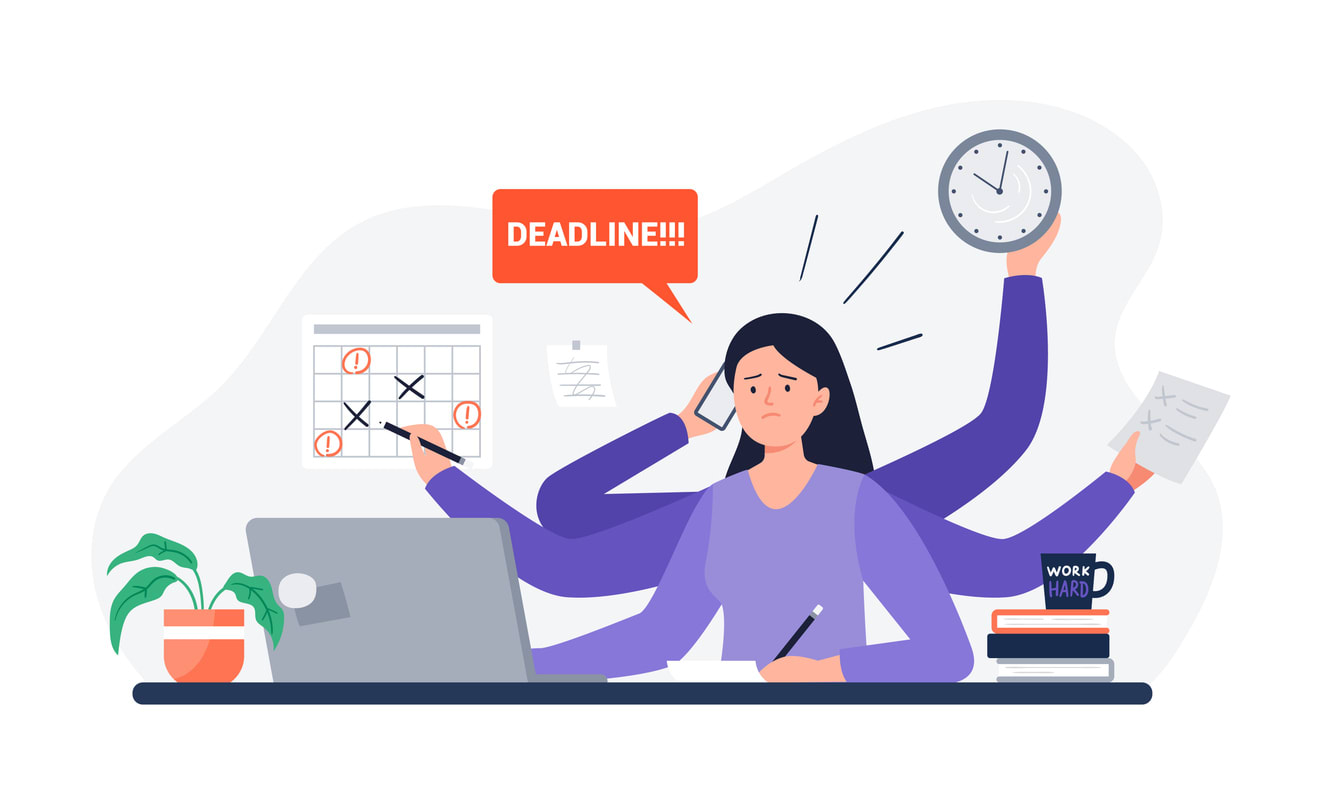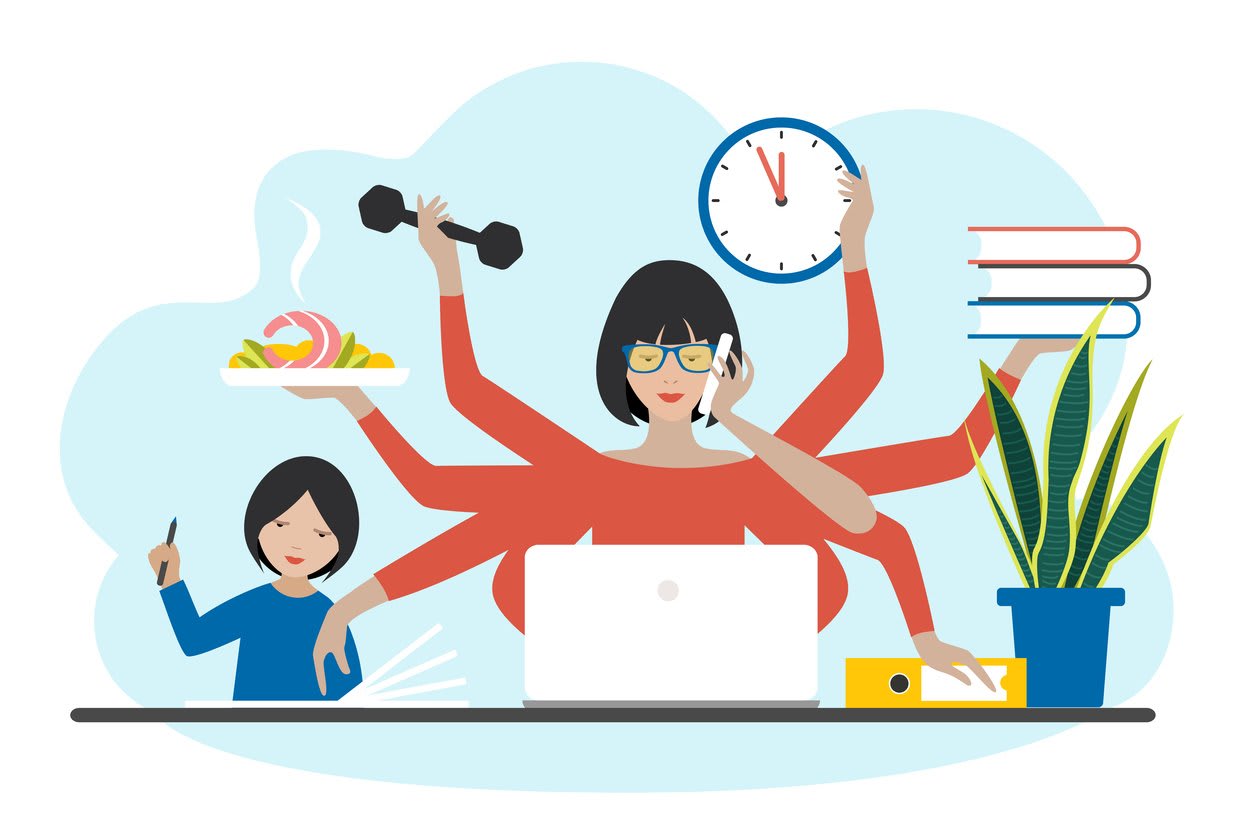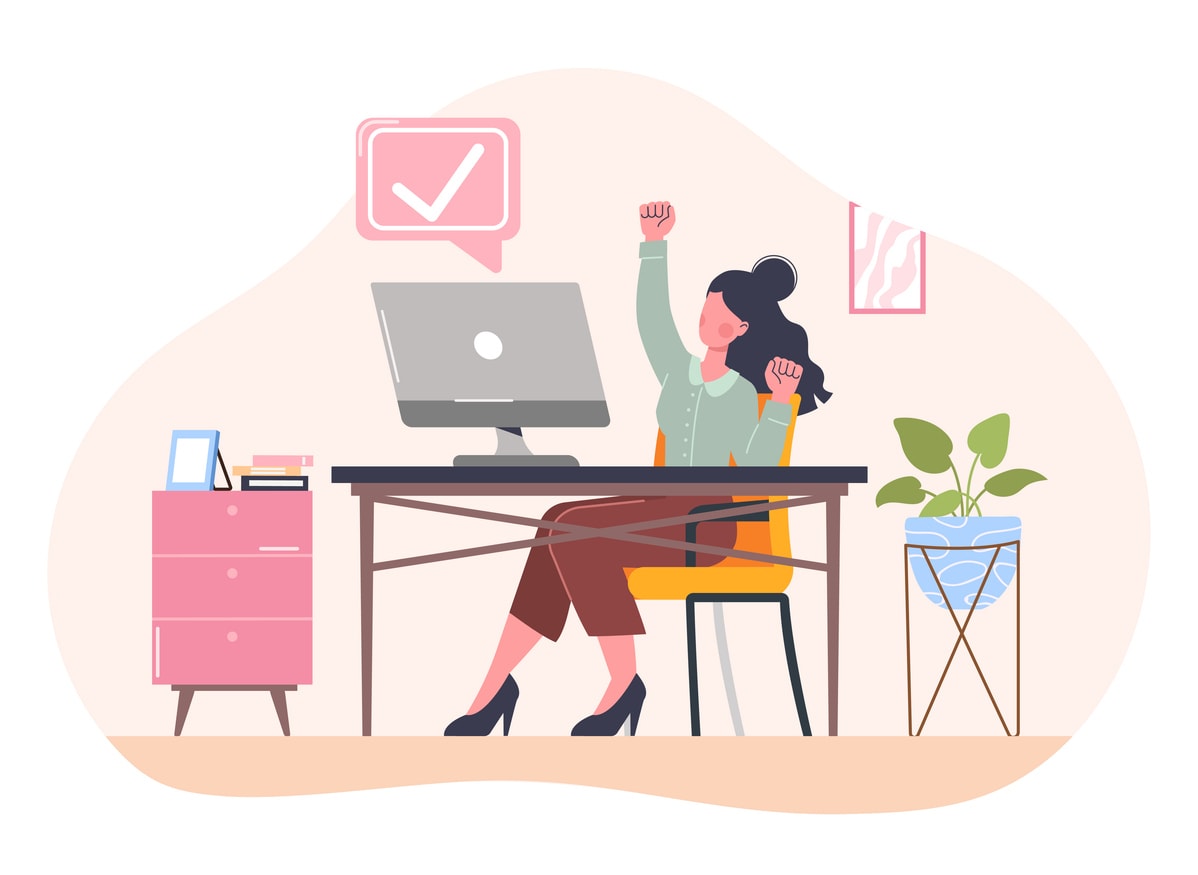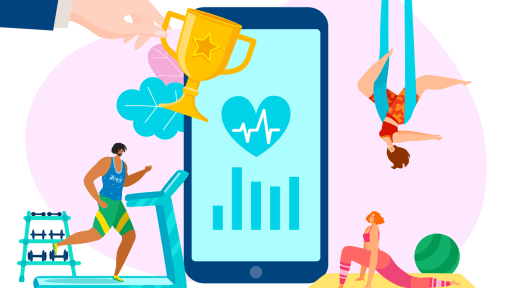Do you feel busy, not productive? You’re not alone. Many people confuse constant activity with actual progress. In this article, we’ll uncover why being busy does not always lead to productivity and provide actionable tips to ensure your efforts bring real results.
Key Takeaways
- Being busy doesn’t mean being productive; focusing on meaningful tasks is crucial for efficiency and well-being.
- Constant busyness can harm health and lead to burnout; finding a balance is key for sustainable productivity.
- Implementing strategies like prioritizing tasks, time blocking, and practicing mindfulness enhances focus and effectiveness at work.
Understanding Why Busy-ness Doesn't Equal Productivity

Our society often celebrates constant busyness, misleading individuals to equate it with success. However, this perception can be dangerously misleading. Constant engagement in busy activities without meaningful outcomes can contribute to feelings of burnout and inefficiency. Recognizing the distinction between being busy and being productive is crucial for efficient time management and overall well-being.
Procrastination often manifests as engaging in trivial tasks, diverting attention from more critical responsibilities. This kind of busyness, focused on low-priority tasks, can create an illusion of productivity while actually hindering meaningful progress. Understanding these nuances helps you prioritize activities that lead to real accomplishments.
The Negative Impact of Always Being Busy

Being constantly busy can harm both emotional and physical health, leading to feelings of anxiety and depression. Over-scheduling can result in a lack of time for self-care and meaningful relationships, further exacerbating stress levels. This endless cycle of busyness without productive outcomes can lead to burnout and exhaustion, ultimately diminishing overall productivity.
The productivity paradox highlights that constant busyness, as often heard, does not guarantee meaningful achievements that truly matter, often leading to frustration. Moreover, excessive busyness can trigger physical health problems like insomnia, muscle tension, and cardiovascular issues.
Maintaining a balanced approach to work is crucial for long-term job well-being and actual productivity, requiring consistent effort.
Common Traps that Keep You Busy but Not Productive
Many of us fall into common traps that keep us busy but not productive. The fear of missing out can result in taking on too many responsibilities, leading to a dilution of focus and less achievement overall. Being aware of ineffective prioritization of tasks can waste time, as not all activities contribute meaningfully towards one’s objectives.
Completing many small tasks can create a false sense of accomplishment while neglecting more significant goals. Multitasking, overcommitment, and procrastination are key culprits that often lead to this state of perpetual busyness, which can feel like too much work. It is essential to complete more significant goals to avoid this trap.
We’ll explore these traps and how to overcome them.
Multitasking
Multitasking lowers work quality due to divided focus and attention. Frequently switching between tasks reduces effectiveness and quality of work, creating the illusion of productivity without real progress. Engaging in multiple tasks simultaneously often leads to decreased overall productivity and an increase in error rates.
The cognitive load increases significantly with task complexity when attempting to multitask, resulting in longer completion times. Instead of multitasking, focusing on one task at a time can significantly improve work quality and efficiency, allowing for less time spent on each task.
Overcommitment
Overcommitting can lead to feeling overwhelmed, resulting in decreased quality of work and slower progress. Taking on too many projects or responsibilities can cause inefficiency despite completing tasks. Overloading oneself with commitments can spread efforts too thin, preventing substantial achievements in any single area.
Periodically asking yourself if there is a better way or anything you can stop doing can help you work smarter and optimize to avoid burnout. Managing your commitments more effectively allows you to focus on what truly matters and find the answer to achieving better results.
Procrastination
Procrastination often disguises itself as busyness, leading individuals to engage in less important tasks instead of focusing on what truly matters. Constant activity can create a false sense of productivity, making it difficult to realize that essential tasks are being neglected.
Low-priority tasks can consume time and energy, ultimately preventing progress on high-priority projects. Focusing excessively on these activities can lead to feelings of overwhelm and stress, reducing overall productivity. Recognizing and addressing procrastination is key to becoming more productive.
Strategies to Transition from Busy to Productive

Transitioning from being busy to productive involves focusing on impactful tasks rather than merely increasing activity. A minimalist workflow encourages focusing on fewer components to streamline productivity efforts. Engaging in mindfulness practices can enhance attention and help rewire the brain for better focus.
Effective work-life balance allows individuals to return to work with greater clarity, creativity, and energy after taking time to recharge. Let’s explore specific strategies to help make this transition, including prioritizing important tasks, time blocking, and setting clear goals.
Prioritize Important Tasks
Scheduling important tasks in your most productive hours and saving routine tasks for later is crucial for your daily routine. Organizing tasks into a clear to-do list can significantly boost concentration and productivity.
Asking questions early in a task helps identify problems sooner and enables quicker completion of important tasks. These scheduling and organizational strategies provide better control over time and enhance productivity by talking about the issues that arise.
Time Blocking
Time blocking helps reclaim the day, boost creativity, and make progress on important tasks. Batch processing and time blocking are recommended strategies for handling repetitive tasks to enhance productivity.
Nir Eyal’s timeboxing process divides time into three key domains. These domains are you, your relationships, and your work. It enhances focus by dedicating specific periods to particular activities.
Set Clear Goals
Setting clear, specific goals is key to staying motivated and making steady progress toward long-term objectives. By defining desired outcomes and breaking tasks into manageable steps, you can stay focused, solve problems more efficiently, and reach better results.
Techniques to Improve Focus and Efficiency
Improving focus and efficiency is crucial for maintaining productivity and achieving better outcomes at work. Regular breaks during work hours are crucial for maintaining productivity and energy levels throughout the day. Setting aside dedicated time for deep work can significantly enhance productivity by reducing interruptions.
Implementing these techniques supports enhanced focus, reduces burnout, and fosters a productive work environment. We’ll explore specific strategies like practicing mindfulness, limiting distractions, and taking regular breaks.
Practice Mindfulness
Daily mindfulness exercises, like focusing on breathing for a few minutes, can strengthen concentration. Mindfulness practices like deep breathing can help you stay calm and stay focused during stressful work situations.
Engaging in mindfulness exercises can significantly lower stress levels during work. Meditation and deep breathing play significant roles in managing stress during work.
Limit Distractions
Creating a workspace that minimizes interruptions can significantly boost productivity levels. Here are some ways to reduce interruptions:
- Turn off notifications during work to reduce distractions.
- Schedule specific times for tasks to limit interruptions during important activities.
- Use calendar blocking to improve focus by scheduling focus time and minimizing interruptions.
The purpose of blocking your calendar is to keep you organized and limit distractions.
Take Regular Breaks
Attention span wears out after prolonged focus, making regular breaks essential. Improving performance and well-being is a significant benefit of taking breaks. Pre-scheduled breaks and setting time limits for tasks help maintain productivity.
Incorporating structured breaks into work sessions can rejuvenate mental stamina and enhance overall output. The Pomodoro technique consists of 25 minutes of work followed by a five-minute break. Stretching, hydrating, and snacking during breaks can help maintain productivity.
Tools to Boost Productivity
Here are some innovative apps for task and productivity management:
- Kumospace: A virtual workspace that brings remote teams together, enabling real-time collaboration, spontaneous conversations, and a more connected work culture.
- Superlist: An innovative task management app, currently in beta, that aims to streamline task organization.
- Akiflow: A digital planner that unifies tasks and schedules, enhancing overall task management efficiency.
- Flown: Facilitates remote co-working sessions, helping users maintain focus and productivity in a virtual environment.
Productivity tools can greatly enhance efficiency by streamlining the way tasks are managed and tracked. AFFiNE combines note-taking and whiteboarding, offering a unique approach to manage information effectively. Morgen has recently enhanced its calendar functionalities, making it a strong competitor in the productivity tool space.
Kumospace offers immersive virtual office software, which can be another great tool for maintaining productivity in remote work settings.
Maintaining Work-Life Balance for Sustainable Productivity
An unbalanced work-life dynamic due to constant busyness can lead to:
- Chronic stress and burnout
- Isolation and loneliness
- Increased risk of health issues like strokes, anxiety, and depression
A healthy work-life balance involves effectively managing time and energy to meet both professional and personal life commitments, while also prioritizing self-care. Flexibility in work arrangements can enhance work-life balance, but it requires intentional boundaries, self-awareness, and the ability to avoid burnout.
Setting and sticking to clear work hours helps prevent work from spilling over into personal time.
Creating a Structured Workflow
Creating a next-day task list organized by time of day effectively prepares you for a productive day. Timeboxing your calendar offers several benefits:
- Helps to communicate your availability for uninterrupted work, enhancing focus.
- Adds time constraints that create space for other types of work.
- Adapts your routine for maximum efficiency.
Regularly evaluating responsibilities can help identify and eliminate non-essential tasks to enhance overall productivity. Implementing a rigid structure in long-term projects helps prevent scope creep and maintain focus on priorities.
The Role of Attitude in Productivity
When one concentrates on the negative aspects of work, it can become a distraction. This distraction ultimately hinders productivity. Doing work that you enjoy positively influences motivation and mental health. Cultivating a positive attitude can significantly enhance work performance, personal satisfaction, and personal development.
Thinking about positives and practicing gratitude can help in maintaining a positive attitude at work. By fostering a positive work environment and mindset, you can boost your best energy, energy levels, and productivity.
Summary
In summary, it’s clear that busyness does not equate to productivity. Constant engagement in trivial tasks, overcommitment, and procrastination are common traps that lead to burnout and inefficiency. Recognizing and addressing these issues is the first step towards meaningful progress.
Implementing strategies such as prioritizing important tasks, time blocking, and setting clear goals can help transition from being busy to truly productive. Additionally, practicing mindfulness, limiting distractions, and taking regular breaks are essential for maintaining focus and efficiency. By using productivity tools and maintaining a healthy work-life balance, you can achieve sustainable productivity and personal satisfaction.
Frequently Asked Questions
Busyness doesn't equal productivity because it often centers on low-priority tasks that don't drive meaningful results. It's important to focus on what truly matters to avoid burnout and work more efficiently.
Always being busy can seriously affect your emotional and physical health, leading to burnout and reduced productivity. It's essential to find balance and take time for yourself.
To transition from busy to productive, concentrate on impactful tasks, implement time blocking, and set clear goals. Mindfulness can also boost your focus and efficiency.
These common traps, like multitasking, overcommitment, and procrastination, can make you feel busy without actually getting important work done. It’s all about focusing on priorities to truly boost your productivity.
To maintain a healthy work-life balance, prioritize self-care and set clear work hours to manage your time and energy effectively. This approach helps ensure sustainable productivity while enjoying your personal life.





